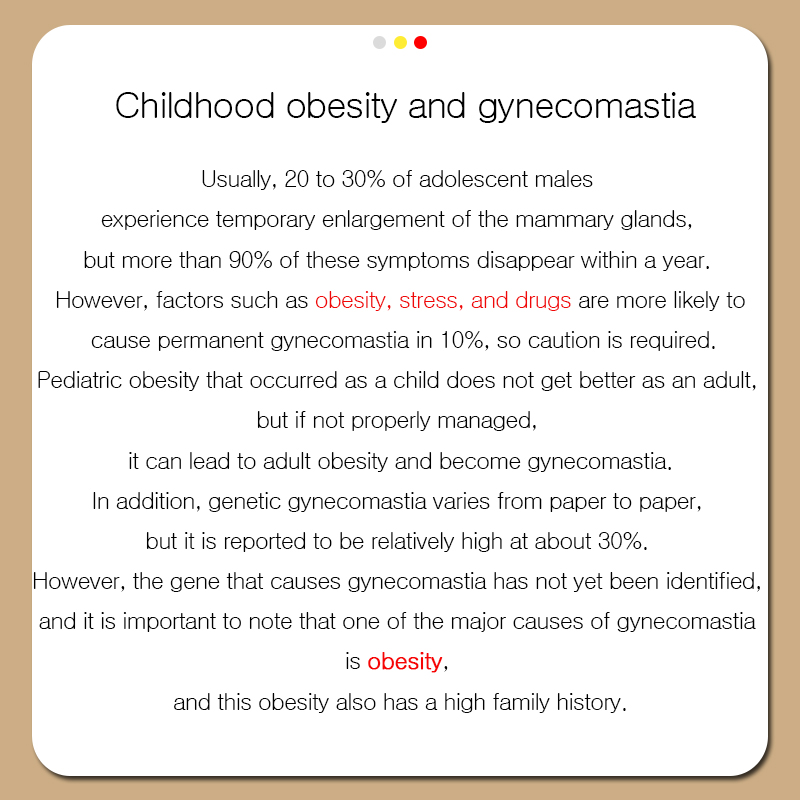
According to several pediatric and endocrinology studies—including those published in the Journal of Clinical Endocrinology & Metabolism—20–30% of adolescent males experience a temporary enlargement of the mammary glands (adolescent gynecomastia), and in over 90% of these cases, the condition resolves spontaneously within about a year. However, the remaining 10% may develop persistent gynecomastia due to various factors such as obesity, chronic stress, or the use of certain medications (for example, steroids or psychoactive drugs).
Obesity that begins in childhood and is not properly managed frequently continues into adulthood and can be a significant contributing factor to adult gynecomastia. The World Health Organization (WHO) has noted a steady increase in childhood obesity worldwide, emphasizing the importance of early dietary and lifestyle interventions to prevent long-term complications, including gynecomastia.
Genetic predisposition also plays a notable role, with some research indicating that up to 30% of gynecomastia cases may have a familial or hereditary component. Although scientists have yet to identify a specific gene responsible for gynecomastia, there is broad consensus that both genetic and environmental factors are involved. One key point is that obesity—a major driver of gynecomastia—tends to run in families as well, suggesting a complex interplay between inherited traits and lifestyle factors.
